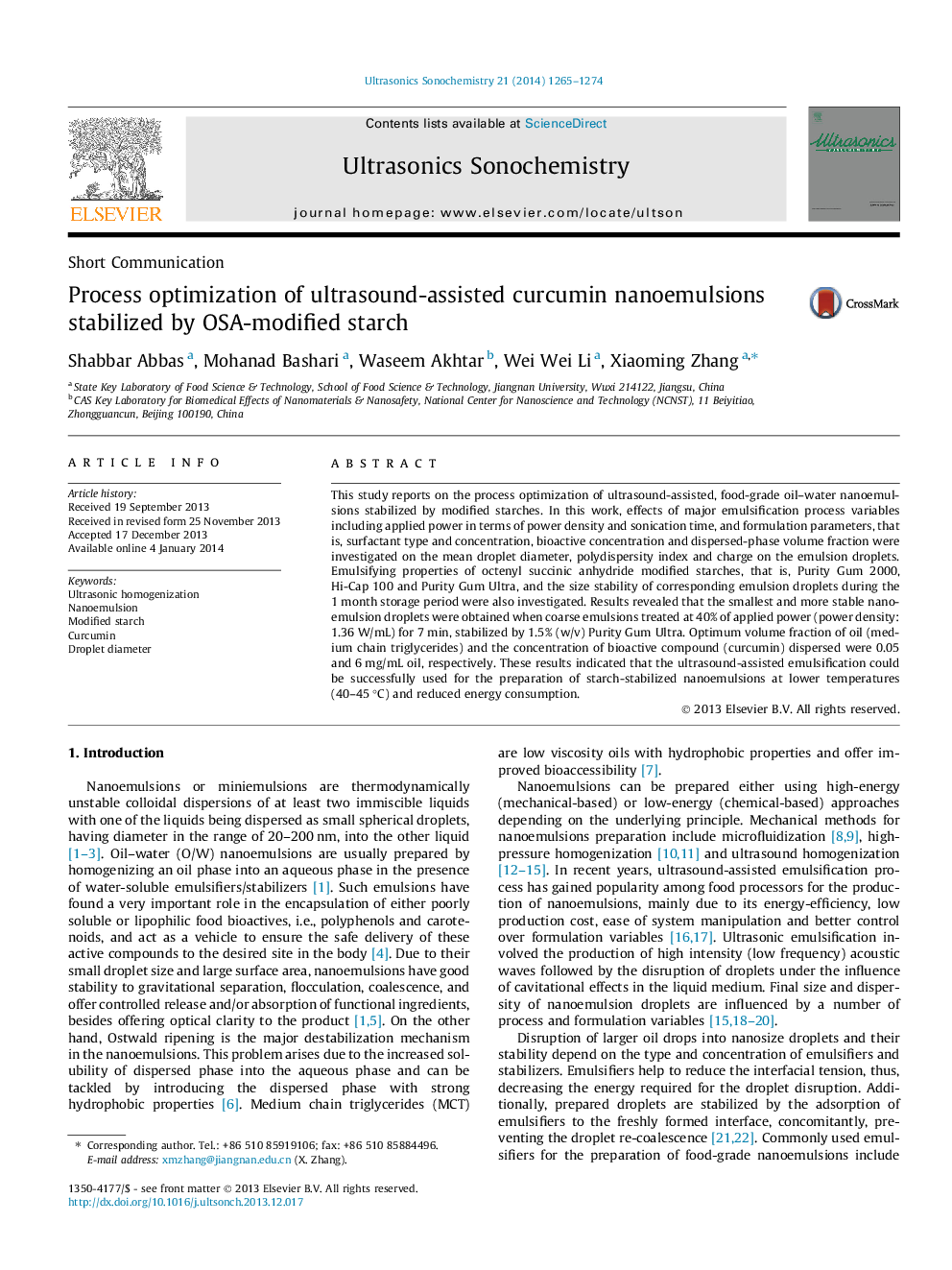| Article ID | Journal | Published Year | Pages | File Type |
|---|---|---|---|---|
| 1268953 | Ultrasonics Sonochemistry | 2014 | 10 Pages |
•Ultrasonication homogenization was used for the nanoemulsion preparation.•Homogenization and formulation parameters were optimized using single factor method.•Nanoemulsions were stabilized by commercial modified starches with increased loading of bioactive compound.•Newly developed commercial modified starch performed better than conventionally used starches.•Ultrasonic homogenization process was easy to control and manipulate.
This study reports on the process optimization of ultrasound-assisted, food-grade oil–water nanoemulsions stabilized by modified starches. In this work, effects of major emulsification process variables including applied power in terms of power density and sonication time, and formulation parameters, that is, surfactant type and concentration, bioactive concentration and dispersed-phase volume fraction were investigated on the mean droplet diameter, polydispersity index and charge on the emulsion droplets. Emulsifying properties of octenyl succinic anhydride modified starches, that is, Purity Gum 2000, Hi-Cap 100 and Purity Gum Ultra, and the size stability of corresponding emulsion droplets during the 1 month storage period were also investigated. Results revealed that the smallest and more stable nanoemulsion droplets were obtained when coarse emulsions treated at 40% of applied power (power density: 1.36 W/mL) for 7 min, stabilized by 1.5% (w/v) Purity Gum Ultra. Optimum volume fraction of oil (medium chain triglycerides) and the concentration of bioactive compound (curcumin) dispersed were 0.05 and 6 mg/mL oil, respectively. These results indicated that the ultrasound-assisted emulsification could be successfully used for the preparation of starch-stabilized nanoemulsions at lower temperatures (40–45 °C) and reduced energy consumption.
